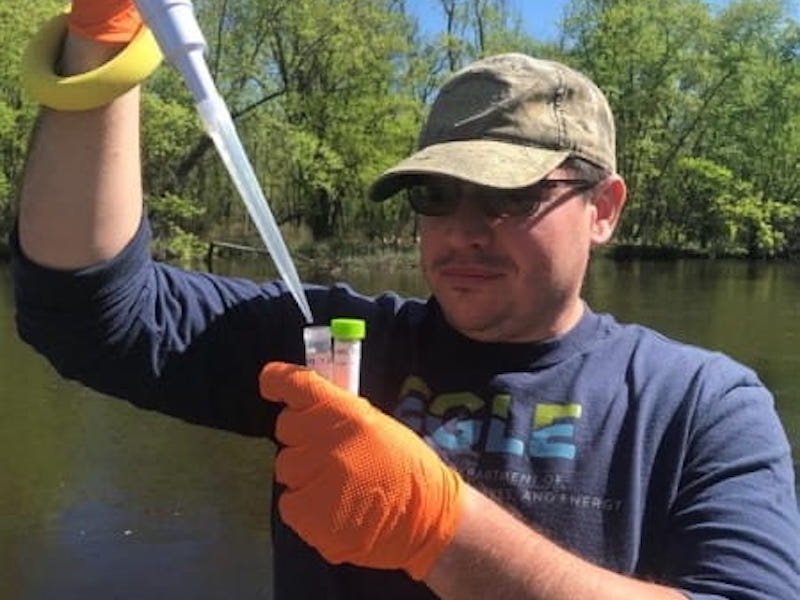The Michigan Department of Environment, Great Lakes, and Energy (EGLE) has established a new Water Quality Value (WQV) for perfluorobutane sulfonic acid (PFBS) and has revised the existing WQV for perfluorooctanoic acid (PFOA).
PFOA and PFBS are members of the larger group of per- and polyfluoroalkyl substances (PFAS). WQVs are designed to protect the designated uses of Michigan’s surface waters, including protections for aquatic life and public health.
The agency’s Water Resources Division (WRD) determined that sufficient data was available to generate human health and aquatic life values for PFBS. Following the risk assessment method provided in Rule 323.1057 (“Rule 57”), a PFBS concentration of 670,000 parts per trillion (ppt; or nanograms per liter) was set for surface water to be broadly protective of human health and 8,300 ppt for surface water specifically protected as a drinking water source. While aquatic life values were established, the human health values are lower and thereby provide a more conservative endpoint with the overall goal of protecting water quality.
For PFOA, an update to the existing WQV from 2011 was undertaken after a review of current science indicated that a revision was needed to ensure the public and environment are protected from adverse effects. The revised human health values for PFOA are 170 ppt for surface water (from 12,000 ppt previously) and 66 ppt for surface water protected as a drinking water source (from 420 ppt, previously).
EGLE's WQVs for PFOS are not being updated at this time. EGLE continues to collaborate with other state departments and review new literature to determine if changes to its PFOS WQVs are warranted.
Importantly, the human health WQVs are not the same as Maximum Contaminant Levels (MCLs) which apply to drinking water systems. Water Quality Values define the maximum concentration of a chemical that can be in Michigan’s surface waters (lakes, rivers, streams, etc.) without adversely impacting aquatic life, recreational activities, fish consumption, and other beneficial uses. They are also used to help determine limits for discharging pollutants from water treatment plants, industrial and commercial facilities, and other regulated entities.
By law, the Water Quality Values become the generic Groundwater-Surface Water Interface (GSI) criteria under Part 201, Environmental Remediation, of the Natural Resources and Environmental Protection Act, 1994 PA 451, as amended. The generic GSI criteria are used as the basis to determine if response activities are necessary to prevent contaminated groundwater from venting to surface water at unacceptable levels.
These new and updated WQVs only apply to surface waters in Michigan – our inland lakes, rivers, streams, wetlands, and Great Lakes. Groundwater and drinking water standards are available on the MPART website.
Frequently Asked Questions:
Q: How will these new Water Quality Values (WQVs) be used?
A: These new and updated WQVs will be used for regulated facilities discharging or venting to surface waters. Additionally, all WQVs are useful in understanding surface water monitoring results and helping to identify waters potentially impacted by toxic chemicals and leads to prioritization to address those concerns.
Q: How will this affect entities like wastewater plants and industry that discharge to Michigan waterways?
A: Once finalized, the WQVs for PFBS and PFOA will be incorporated into the review process for regulated discharges and venting groundwater to surface waters. Requirements for effluent limits based on state and federal regulations, monitoring, pollutant minimization programs, and/or corrective action programs can be incorporated into regulatory control documents such as permits and administrative orders. It is important to note however that EGLE anticipates that PFOS will continue to be the main regulatory driver at most facilities.
Q: What about the other PFAS constituents for which there are no values or standards?
A: Michigan has led the nation in researching and establishing standards for PFAS and the state continues to research how to better protect public health and the environment from their hazards. As new data and research develops, EGLE and the state’s MPART will continue to provide protection for the public and the state’s natural resources.
Q: How does EGLE develop these Water Quality Values?
A: Michigan uses a narrative process for developing WQVs under Michigan Rule 323.1057 (“Rule 57”), which follows established federal guidance. Rule 57 allows the state to use a standardized, transparent process to develop and update WQVs when new toxicological data are available and to provide a timely response to contaminants of emerging concern. Additional information on this process can be found on EGLE’s Rule 57 Water Quality Values webpage.
Q: What is the federal government doing about PFAS?
A: EGLE continues to monitor ongoing efforts from the U.S. EPA regarding PFAS and as new information becomes available will consider future updates to WQVs as deemed appropriate to protect public health and the environment. Presently, the U.S. EPA is in process of developing updated drinking water health advisories for PFOA and PFOS.



































